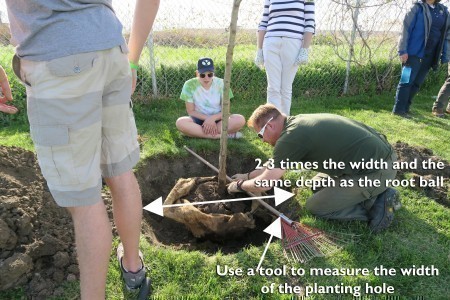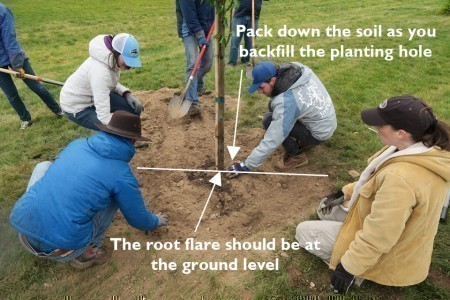Planting Seedlings
- Dig a hole large enough to allow the root system to spread out without folding over on itself. If planting containerized seedlings, gently massage and spread apart the root “ball” before planting.
- Place the seedling in the hole and be sure to double check that the root system has enough room to spread out and the hole is not too deep or too shallow. The correct depth is achieved when the transition point from stem to root is at the level of the ground.
- Keep the seedling in the correct position and backfill the planting hole, and pack down the soil around the tree.
Planting Landscape Trees
Properly planting trees is the first step towards protecting their long-term survival. Follow these steps to properly plant landscape trees.

- Using a shovel handle, measure the width and depth of the root ball of the tree you are planting.
- Remove any grass/weeds in a circle that is 2-3 times the width of the root ball.
- Dig the planting hole as a shallow bowl that is the width of the circle and the depth of the tree’s root ball.
- Remove any tags from the trees branches and gently place it in the planting hole.
- Gently take the tree out of the container or remove the wire basket and burlap, taking care to keep the root ball together.
- Find the root flare of the tree (on obvious bulge where the tree transitions from stem to root) and make sure there is no soil above it. Some nursery grown trees will have as much as 3-4 inches of soil above the root flare.
- Re-measure the planting hole to be sure that the root flare is at or just above the level of the ground.
- Backfill around the tree until the planting hole is filled in. Pack down the soil as you fill in the planting hole.
- Give the tree 10-20 gallons of water to help pack down the soil and remove air pockets in the planting hole.
- Follow the next tree care tip to properly mulch the newly planted tree.

Video Guide


